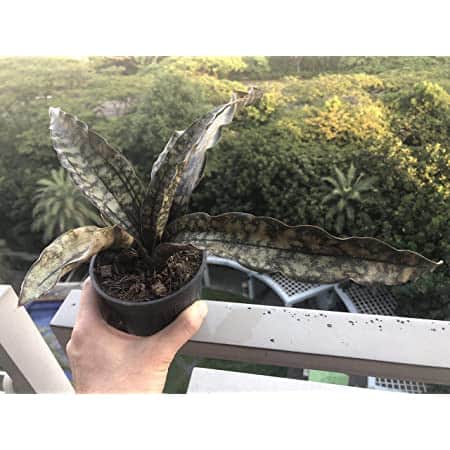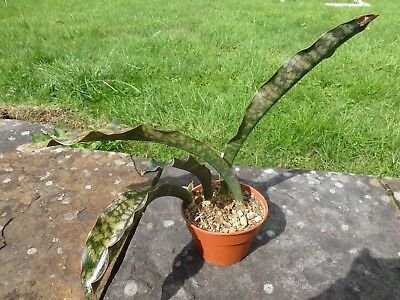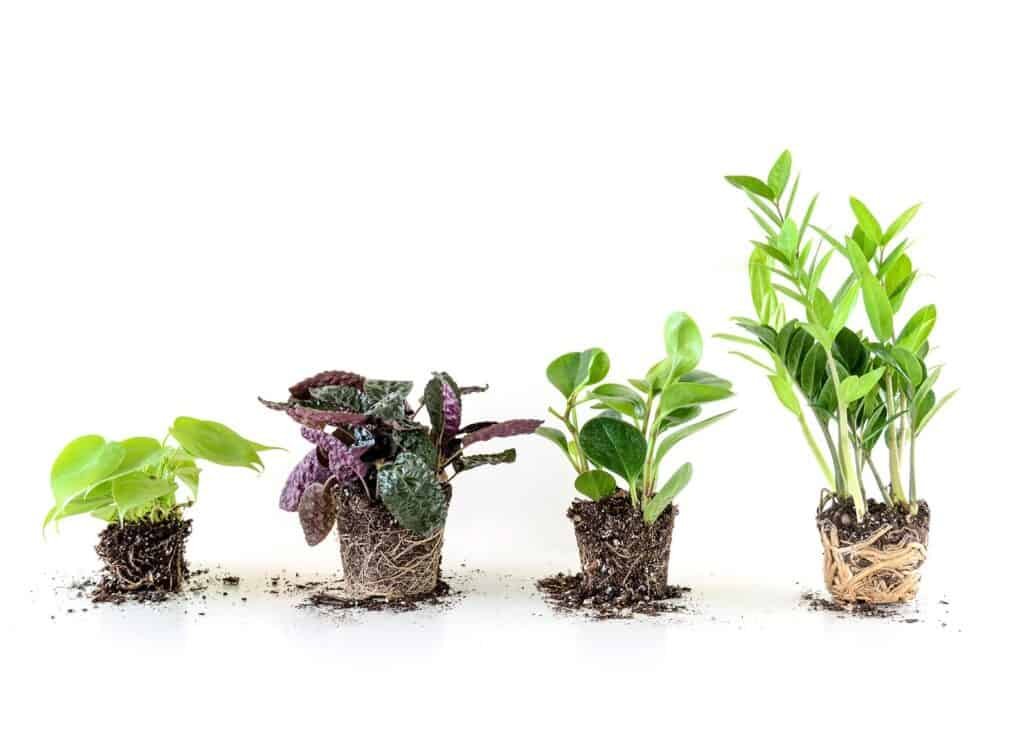Still wondering what is Kirikii snake plant?
Or even you don’t even know about snake plant at all?
Wondering The snake plant is tough as nails.
It is primarily found in Africa, where it thrives in arid conditions.
It’s adapted to hot environments and keeps all of its pores closed during the day..
..to prevent water loss through evaporation.
When the temperature drops at night, its pores open..
..allowing all of the oxygen it has been storing to escape.
It is a dream of a houseplant because of its toughness.
This is the one for you if you’re a beginner.
It thrives on being ignored.
It thrives in any light and is unconcerned if you forget to water it.
The only thing it despises is having too much water in its system..
It will benefit from a monthly feed of liquid fertilizer in the spring and summer..
..but that is about all the special attention it requires.
The snake plant is prized all over the world, despite its low profile.
It’s linked to Ogun, the god of war, and Oya, the god of storms, all over Africa.
It’s known as the ‘tiger’s tail orchid’ in China and the’sword of Saint George’ in Brazil.
In general, this plant is well-known.
Because its strong fibers were once used to make bowstrings..
..this plant is also known as “viper’s bowstring hemp.”
Before we start..
Sansevieria Kirkii Care: Growing Star Sansevieria

Sansevieria kirkii, also known as star sansevieria..
..is a snake plant that is a little more difficult to come by.
It’s a fantastic indoor houseplant..
..but if you live in the right climate, it can also be used for outdoor gardening.
If you’re a fan of this popular species..
..finding one and learning how to care for it is well worth the effort.
Sansevieria Kirkii Pulchra Coppertone (snake plant) MUST HAVE!
At maturity, the super stiff, shimmery, copper and deep bronze..
..mottled leaves with wavy edged margins grow in an open rosette and reach 2 to 3 feet in length.
In direct sunlight, the rare bronze-copper coloration gleams brilliantly.
Delicate, lightly scented flowers emerge from stalks in the spring and early summer.
It is commonly grown as an office plant and is one of those plants that can withstand periods of neglect.
They are ideal for growing indoors or on a city balcony due to their toughness and ease of growth.
Kirkii Pulchra Coppertone’s growth rate is highly dependent on soil type, sunlight, temperature, and other factors.
To reduce transpiration and travel stress, a few leaves are frequently trimmed prior to shipping.
Coppertone Kirkii Pulchra Snake Plants..
..also known as Sansevieria, are excellent houseplants that can withstand more neglect..
..than almost any other plant and thrive in both bright and low light environments.
Sansevieria thrives in the xeriscape, whether in a pot or directly in the ground.
They’re a great addition to any outdoor space, garden, or patio.
In colder climates, a containerized Sansevieria can be brought inside for the winter.
There’s no need to worry about planting your Sansevieria right away when you get it.
Simply place your new plant in a tray and move it to a shady location to store it for a while; water when dry.
This will allow you plenty of time to find the perfect spot for your new Sansevieria.
Here we have story from Jeremiah, about his experience having sansevieria kirkii.
Let us hear Jeremiah’s story
The kirikii snake plant was a popular houseplant.
It was even more popular when it was used as an ingredient in recipes for traditional dishes..
..that were always served at the grand holidays.
Even though they are often grown indoors..
..they seem to thrive when given lots of sun and water.
A lot of people like to grow them because not only are they easy to take care of..
..but also because they give off potent scents that help make your home feel more inviting and welcoming.
I have this plant for almost 3 years now..
..and it’s so fantastic!
It brings peace to me..
..but I don’t know what exactly happens.
But it’s so worth to care, having, and growing this plant until this big
Snake plants, also know as mother-in-law’s tongue or sansevieria, have become increasingly popular, and rightly so. With their striking lines and hardiness, they’re the houseplants even black thumbs can show off.
Shifrah Combiths, Author of Apartment Therapy
Check this out:
Light & Temperature

This succulent grows best in moderate or slightly filtered sun.
Bright, indirect light will bring out the color in the leaves.
Make sure it’s not exposed to full sun as that will damage the leaves and turn them yellow.
While it can survive in shade, it’s not recommended.
Make sure your Sansevieria kirkii plants are in an average temperature environment..
..it thrives in temperatures ranging from 59 to 73 degrees Fahrenheit.
Your hardy Sansevieria can withstand temperatures as low as 50°F..
..but this is not the best temperature to leave your plants in for long periods of time.
Keep reading…
Repotting

When repotting your snake plant..
..make sure it is completely dry before removing it from its current container.
Next, fill your planter with free-draining soil and place it in a wide, medium-sized planter with drainage holes.
Place your plant in the new pot and add more soil to the empty space.
Keep the soil loose and well-watered.
Before repotting, wait until the roots have completely filled your current pot..
..it likes to be a little root-bound!
Propagation

The division of your snake plant is a quick way to propagate it.
Simply wait for it to outgrow its current pot..
..and then keep an eye out for any root or stem offsets when repotting it.
Separate any offsets from the parent plant and plant both the offset..
..and the mother Sansevieria kirkii in separate pots if there are any.
..aka plant is propagated by division.
Simply wait for it to outgrow its current pot..
..and then keep an eye out for any root or stem offsets when repotting it.
Separate any offsets from the parent plant and plant both the offset and the mother Sansevieria kirkii..
..in separate pots if there are any.
Pruning
Prune and spruce up your mature plant with a thin knife to make it look new and fresh.
Simply cut the plant’s longest leaves at the soil line (they usually grow on the outer sides).
You can propagate your plants by taking leaf cuttings from those cut up leaves.
Keep going…
Growing Problems

The only issue you’ll have is overwatering..
..which will cause the roots to rot and eventually kill the plant.
If you make sure the soil is well-drained, you won’t have to worry about this common houseplant care issue.
Also, keep your Sansevieria kirkii away from direct, bright light, as this will cause the leaves to discolor.
Make sure it’s in front of a lightly curtained window where it’ll get plenty of bright, filtered light.
Grow Zone & Light
If grown outdoors, it’s best in zones 9b-11 (find your zone here).
Sansevieria necessitates 70-90 percent of direct sunlight.
Partially shaded areas are often the best..
..depending on your location.
Kirkii Pulchra Coppertone Sansevieria should be brought indoors or protected during the winter months..
..if they live in the northern end of their growing zone.
The patio zone is 4a-11, which means that in colder climates..
..the potted plant will thrive during the summer months but must be brought inside before winter.
This evergreen succulent thrives in warmer climates, such as the spring and summer months.
Rainy season is the time of blossoming in its natural habitat, which is from March to May.
During the winter, the plant goes dormant.
Growing Conditions
For this plant, a fast-draining, porous soil is ideal.
A mixture of three parts loam and one part pumice is recommended.
Another option is to mix equal parts soil, perlite, and peat.
Make sure the soil is able to drain water freely.
This plant is drought-tolerant and doesn’t need to be watered frequently.
Before each watering, allow the soil to completely dry.
During the growing season, watering can be done once every 1-2 weeks.
Water once a month or less frequently during the winter.
Allowing the soil to remain wet for an extended period of time is not a good idea, especially during the winter.
It can withstand conditions ranging from direct sunlight to low light.
For growth and blooming, bright indirect sunlight is ideal.
In tropical climates, outdoor plants prefer shade or semi-shade.
It can withstand full sun in non-tropical climates.
This variety’s ideal growing temperature ranges from room temperature to a hotter tropical climate.
It is not frost resistant. Keep it above 40°F (4°C).
When it’s cold outside, don’t water.
Pests
Because of their sturdy, thick leaves and strong base..
..Sansevieria kirkii is virtually pest-free.
Diseases
There aren’t many diseases to be concerned about besides overwatering.
Sum Up
See having Snake plant is good choice for you to have!
It’s cool, its famous, it’s easy to have and care!
What else do you need?
In this pandemic time like this, is a good choice for you to have an new activity…
…and having snake plant is a good choice for you to have!
Conclusion
Last thing for sure.
This plant need to be care carefully, remember plant need the “love” too.
Alright that’s all for today!
Do you have any questions about all of this?
Or do you want to add some method for caring and having kirikii snake plant?
Let me know your recommendation from the comment below.
Check out more posts on our website like this one here!
I hope you can now take care your snake carefully and grow it big!
Thanks for reading this article! Bye!


